Nov. 30, 2023
Prelims Pointers
Nov. 30, 2023

What is Primary Evidence?
- It is covered by Section 62 of the Evidence Act and is considered the highest class of evidence.
- Primary evidence, also known as best evidence, refers to the actual documents produced for the court’s inspection.
- It is admissible without prior notice and takes precedence over secondary evidence.
- As per Section 62, when the document itself is produced for the inspection of the court, it is called the primary evidence. If the document is in parts, then each part forms the primary evidence.
- Example: Birth Certificate issued by a government authority.
About Secondary Evidence under the Indian Evidence Act, 1872:
- It is defined under Section 63 of the Evidence Act.
- It can only be introduced if primary evidence is not available, and the reason for its absence must be explained.
- It is considered a substitute for the original or primary evidence.
- It is generally considered to be of lower evidentiary value compared to primary evidence.
- However, if primary evidence is unavailable and the reason for its absence is explained, secondary evidence may be admitted in court.
- Different types of secondary evidence are Certified copies, Copies prepared by mechanical process, Counter foils, Photographs, Xerox copy, Photostat copy, Carbon copy, typed copy, Tape records, Counterparts, Oral accounts, Registration copy, etc.
- Example: Copy of the 10th mark sheet with Date of Birth or identification proofs like Voter Card or Aadhar Card as secondary evidence for a lost birth certificate.
- Principles laid down by the Supreme Court for examining the admissibility of secondary evidence:
- The law requires the best evidence to be given first, that is, primary evidence.
- Section 63 of the Evidence Act provides a list of the kinds of documents that can be produced as secondary evidence, which is admissible only in the absence of primary evidence.
- If the original document is available, it has to be produced and proved in the manner prescribed for primary evidence. So long as the best evidence is within the possession or can be produced, or can be reached, no inferior proof could be given.
- A party must endeavour to adduce primary evidence of the contents, and only in exceptional cases will secondary evidence be admissible. The exceptions are designed to provide relief when a party is genuinely unable to produce the original through no fault of that party.
- When the non-availability of a document is sufficiently and properly explained, then secondary evidence can be allowed.
- Secondary evidence could be given when the party cannot produce the original document for any reason not arising from his default or neglect.
- When the copies are produced in the absence of the original document, they become good secondary evidence. Still, there must be foundational evidence that the alleged copy is a true copy of the original.
- Before producing secondary evidence of the contents of a document, the non-production of the original must be accounted for in a manner that can bring it within one or other of the cases provided for in the section.
- Mere production and marking of a document as an exhibit by the Court cannot be held to be due proof of its contents. It has to be proved in accordance with the law.
Prelims Pointers
Nov. 30, 2023
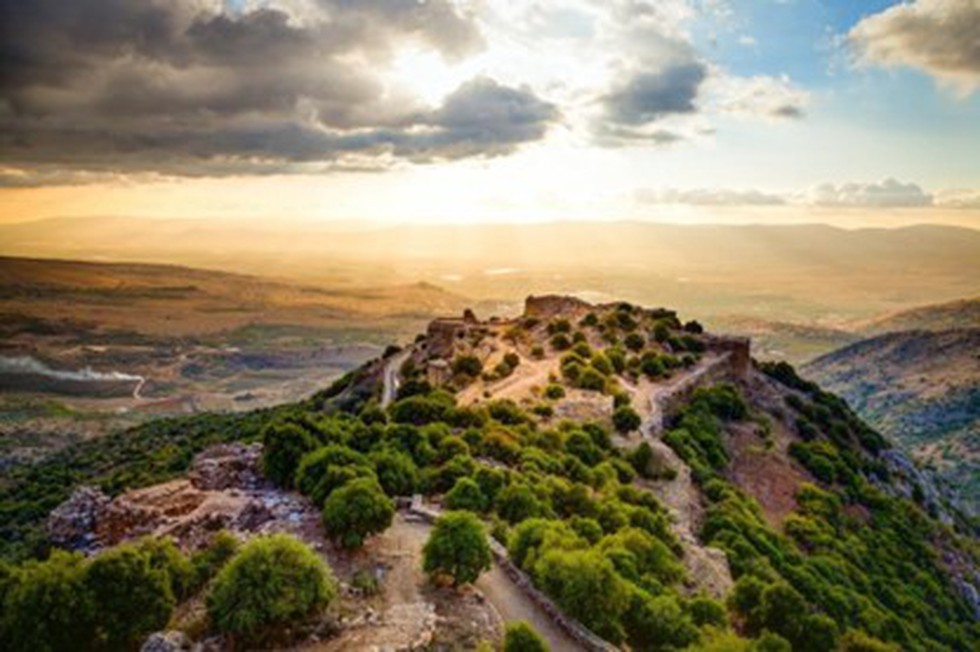
About Golan Heights:
- It is a rocky plateau in south-western Syria, about 60km (40 miles) south-west of the Capital, Damascus.
- It is bounded by the Jordan River and the Sea of Galilee on the west, Mount Hermon on the north, the seasonal Wadi Al-Ruqqād River on the east, and the Yarmūk River on the south.
- The Golan extends about 44 miles (71 km) from north to south and about 27 miles (43 km) from east to west at its widest point.
- It is roughly boat-shaped and has an area of 1,150 square kilometres.
- History:
- Israel seized the Golan Heights from Syria in the closing stages of the 1967 Six-Day War.
- Most of the Syrian Arab inhabitants fled the area during the conflict.
- An armistice line was established, and the region came under Israeli military control. Almost immediately, Israel began to settle the Golan.
- Syria tried to retake the Golan Heights during the 1973 Middle East Despite inflicting heavy losses on Israeli forces, the surprise assault was thwarted.
- Both countries signed an armistice in 1974, and a UN observer force has been in place on the ceasefire line since 1974.
- Israel unilaterally annexed the Golan Heights in 1981.
- There are more than 30 Israeli settlements in the Golan. The settlements are considered illegal under international law, although Israel disputes this.
- About 20,000 Syrians and 20,000 Israelis live in the Golan.
- Strategic Importance:
- The Syrian capital, Damascus, can be clearly seen from the top of the Golan Hills.
- When it rains here, its water goes to the Jordan River, which supplies water in dry areas. It is believed that this water supplies one-third of Israel's water.
- Apart from this, the land here is very fertile, which is very good for farming.
Prelims Pointers
Nov. 30, 2023
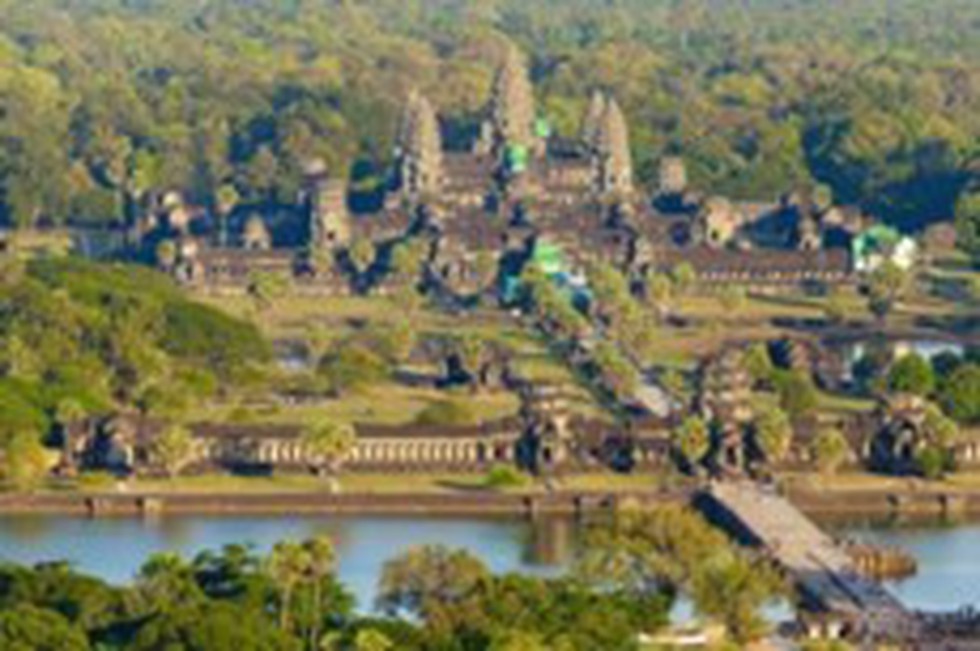
Why in the News?
The unofficial title “Eighth Wonder of the World” is sometimes given to buildings, structures, projects, designs, or even people who are thought to be comparable to the Seven Wonders of the World.
About Angkor Wat:
- It is the largest religious monument in the world.
- It was built by the Khmer King Suryavarman II in the first half of the 12th century.
- It was originally dedicated to the Hindu god Vishnu before becoming a Buddhist temple by the end of the 12th century.
- In 1992, the temple complex was named a UNESCO World Heritage Site.
- Features:
- Sandstone blocks were used to build the structure.
- It is protected by a 15-foot-high wall and a wide moat.
- It covers an area of 200 acres.
- The temple has five major towers symbolising the peaks of Mount Meru, believed to be the abode of the gods in Hindu and Buddhist mythology.
- Thousands of bas-reliefs depicting important deities and figures in Hindu and Buddhist religions, as well as key events in their narrative traditions, adorn the temple walls.
- Where is Angkor Wat?
- It is located in the northwestern province of Siem Reap in Cambodia.
- The city of Angkor, home to Angkor Wat, was the capital of the Khmer Empire and thrived between the 9th and 15th centuries.
- Angkor itself stretches over 400 km2 and is now home to the magnificent remains of a variety of temples, including Angkor Wat, Angkor Thom, Bayon Temple, and Ta Prohm.
Prelims Pointers
Nov. 30, 2023

About Sajag OPV:
- ICGS Sajag is part of the Indian Coast Guard fleet of OPVs, based on the West Coast of India in Porbandar, Gujarat.
- It has been designed and built indigenously by Goa Shipyard Limited (GSL).
- It is the third in the series of 105-meter OPVs being built by GSL.
- It operates under the operational command of the Commander Coast Guard Region (North West).
- Sajag has undertaken various Coast Guard operations, including coastal security, IMBL / EEZ surveillance, anti-transnational crimes, and maritime SAR and pollution response operations in the past.
- Features:
- The ship is equipped with modern weapon systems, sensors, and state-of-the-art navigation and communication systems.
- It is propelled by two 9100 KW diesel engines and can attain a maximum speed of 26 knots.
- It has an endurance of 6000 nm at an economical speed.
- It is fitted with a 40/60 Bofors gun and two 12.7 mm guns.
- It is designed to carry one twin-engine helicopter and four high-speed boats, including two inflatable boats for boarding operations, search and rescue, law enforcement, and maritime patrol.
- The ship is also capable of carrying pollution response equipment to contain oil spills at sea.
- The ship is also equipped with an Integrated Bridge System (IBS), Integrated Platform Management System (IPMS), Power Management System (PMS) and High-Power External firefighting (EFF) system.
Prelims Pointers
Nov. 30, 2023
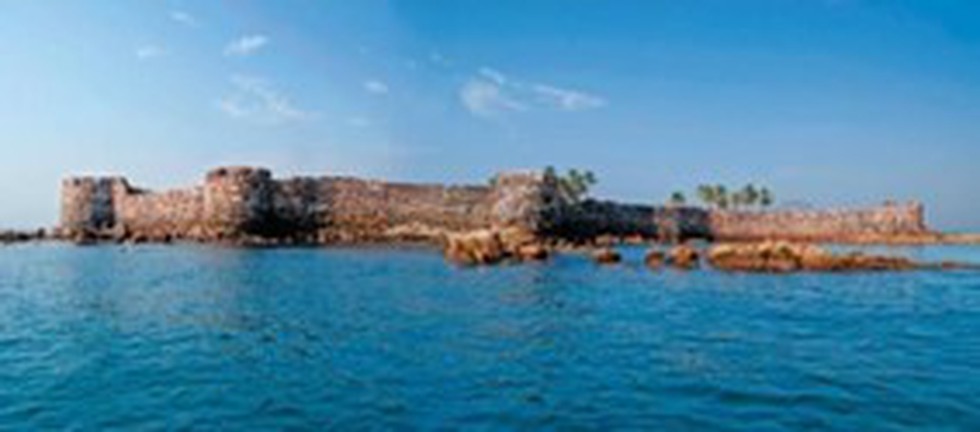
About Sindhudurg Fort:
- It is a historical fort that occupies an islet in the Arabian Sea, just off the coast of Maharashtra in western India.
- The fortress lies on Kurte Island, very near the coast of Malvan town in Sindhudurg District in the Konkan region of Maharashtra, 450 kilometres south of Mumbai.
- The fort was built by Chhatrapati Shivaji Maharaj of the Maratha Empire.
- The construction of the fort began in 1664 and took three years to complete.
- The main objective was to counter the rising influence of foreign colonisers (English, Dutch, French, and Portuguese merchants) and to curb the rise of the Siddis of Janjira.
- Features:
- It is spread over 48 acres with fortified walls that are 29 feet high and 12 feet thick and stretch for two miles.
- As many as 52 bastions with embrasures for cannons guard its walls.
- One can enter the fort through the Dilli Darwaja, the main gate. Because of its architectural design, the gate is visible only from close quarters and seems to be part of the walls.
- It is surrounded by several smaller forts, such as Padmagad, Rajkot, and Sarjekot Forts.
- A handprint and footprint of the Maratha King are embedded on a slab within the fort.
- A small temple dedicated to the Chhatrapati also finds a place within the bounds of the fort.
Prelims Pointers
Nov. 30, 2023

About Ayushman Arogya Mandir:
- The Government of India announced in 2018 that 1.5 lakh HWCs would be created in the country by transforming existing sub-health centres and primary health centres to deliver comprehensive primary health care and declared this as one of the two components of Ayushman Bharat.
- It was decided the Centre would provide 60% of the funding and, in turn, states would follow its design manual.
- To date,61 lakh AB-HWCs have been made functional across the country, which is higher than the initial target.
- The AB-HWCs provide maternal and child healthcare services, including primary-level care for emergencies and trauma, including free drugs and diagnostic services, among other things.
- The new tagline of AB-HWCs is Arogyam Parmam Dhanam’.
Key facts about Ayushman Bharat (AB)
- The Union government announced in 2018 two major initiatives in the health sector, as part of the Ayushman Bharat programme.
- Curative care - Pradhan Mantri Jan Arogya Yojana (PMJAY): For hospitalisation at secondary- and tertiary-level private hospitals
- Primary care - Health and Wellness Centres (HWC): To strengthen primary healthcare
- PMJAY will provide a cover of up to 5 lakhs per family per year to poor and vulnerable people, for secondary and tertiary care hospitalization.
- The National Health Authority (NHA) is responsible for the implementation of PMJAY.
Prelims Pointers
Nov. 30, 2023

Why in the news?
- The campaign, called Adoptaxolotl, asks people for as little as 600 pesos (about $35) to virtually adopt one of the tiny “water monsters."
About Axolotl:
- It is an aquatic salamander renowned for its ability to regenerate its spinal cord, heart, and limbs.
- These amphibians also readily make new neurons throughout their lives.
- Axolotls, like humans, contain two copies of every gene—one inherited from the father and the other from the mother.
- It is notable for its permanent retention of larval features, such as external gills.
- The species is found only in Lake Xochimilco, within Mexico City.
- The name axolotl is also applied to any full-grown larva of Ambystoma tigrinum (tiger salamander) that has not yet lost its external gills.
- They feast on a menu of molluscs, worms, insect larvae, crustaceans, and some fish.
- Conservation status
- IUCN: Critically endangered.
- Threats: Habitat degradation, pollution, fishing, nonnative predators, the pet trade.
Prelims Pointers
Nov. 30, 2023
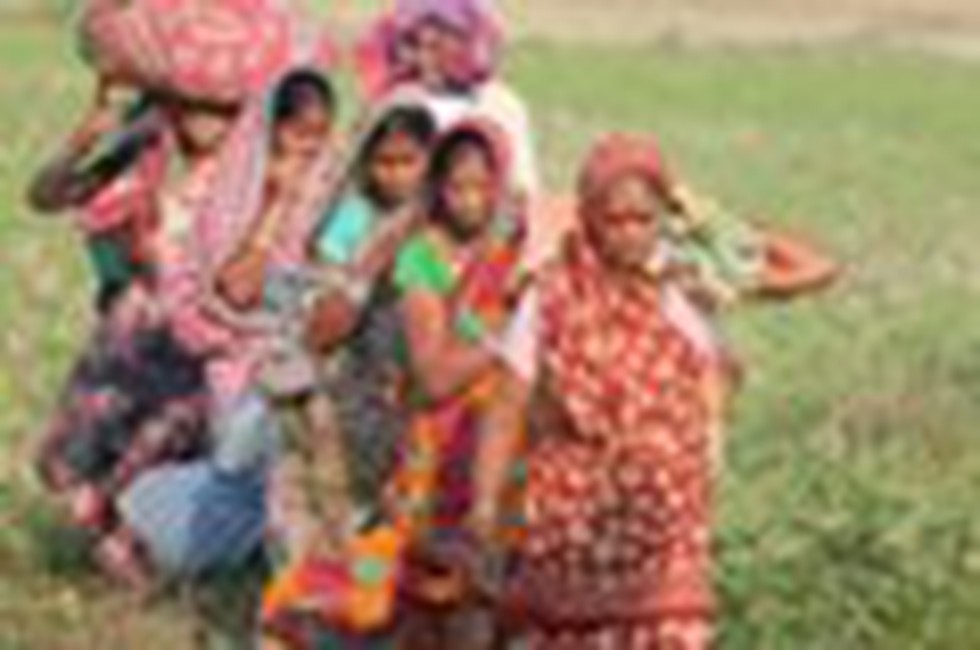
About Pradhan Mantri Janjati Adivasi Nyaya Maha Abhiyan (PM JANMAN):
- The PM-JANMAN (comprising Central Sector and Centrally Sponsored Schemes) to focus on 11 critical interventions through nine ministries, including the Ministry of Tribal Affairs.
- The scheme aims to provide crucial interventions such as permanent housing, road connectivity, piped water supply, mobile medical units, hostel construction, ‘Anganwadi’ facilities, skill development centres,
- Other than the 11 critical interventions, the following interventions of other Ministries will be part of Mission:
- Ministry of Ayush will set up Ayush Wellness Centre as per existing norms, and Ayush facilities will be extended to PVTG habitations through Mobile Medical Units.
- The Ministry of Skill Development and Entrepreneurship will facilitate skill and vocational training in PVTG habitations, multipurpose centres and hostels as per the suitable skills of these communities.
Prelims Pointers
Nov. 30, 2023

About X-ray Polarimeter Satellite (XPoSat):
- It is India’s first dedicated polarimetry mission to study various dynamics of bright astronomical X-ray sources in extreme conditions.
- Aim: It is aiming to investigate the polarisation of intense X-ray sources.
- The spacecraft will carry two scientific payloads in a low earth orbit.
- POLIX (Polarimeter Instrument in X-rays): It will measure the polarimetry parameters (degree and angle of polarisation) in a medium X-ray energy range of 8-30 keV for photons of astronomical origin.
- XSPECT (X-ray Spectroscopy and Timing) payload: It will give spectroscopic information in the energy range of 0.8-15 keV.
- It is designated for observation from a Low Earth Orbit (non-sun synchronous orbit of ~650 km altitude, low inclination of approximately six degrees).
- The mission life is expected to be approximately five years.
- The payloads onboard XPoSat will observe the X-ray sources during the spacecraft’s transit through the Earth’s shadow, i.e., during the eclipse period.
- It will be launched by the Polar Satellite Launch Vehicle (PSLV) from the Satish Dhawan Space Centre in Sriharikota.
Prelims Pointers
Nov. 30, 2023

About Fast Track Special Court (FTSC):
- It was formulated as a centrally sponsored scheme to establish FTSCs for the timely disposal of cases related to rape and the Protection of Children from Sexual Offences Act (POCSO Act) in August 2019.
- Initially commenced in October 2019 for one year, the scheme was extended for an additional two years until March 31, 2023.
- Now it has been further extended until March 31, 2026, with a financial outlay of Rs. 1952.23 crore.
- Fund: The Central Share is funded from the Nirbhaya Fund.
- These are designed as dedicated courts which are expected to ensure swift dispensation of justice, offering quick relief to victims while strengthening the deterrence framework for sexual offenders.
- Nodal Ministry: It is implemented by the Department of Justice, Ministry of Law & Justice.
- It augments State Government resources for establishing FTSCs across the country, ensuring the swift disposal of cases related to rape and the POCSO Act.
- All States/Union Territories have participated in the Scheme, operationalizing 761 FTSCs, including 414 exclusive POCSO Courts.
- The expected outcomes of the scheme are:
- Reflect the nation's commitment to ending sexual and gender-based violence.
- Substantially reduce pending cases of Rape & POCSO Act, relieving the burden on the judicial system.
- Ensure swift access to justice for victims of sexual crimes through improved facilities and expedited trials.
- Reduce the burden of cases to a manageable number.
Nov. 29, 2023
Prelims Pointers
Nov. 29, 2023
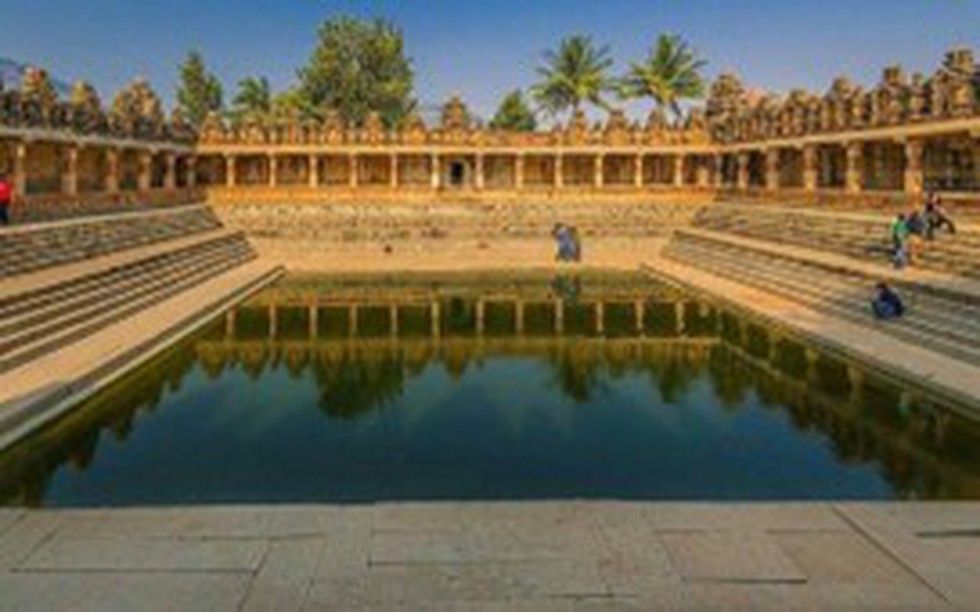
About the Nolamba Dynasty:
- They were one of the significant political powers in South India.
- The Nolambas ruled from the 8th to the 12th centuries C.E. over an area traditionally called Nolambavadi, which extended over south-east Karnataka and parts of Tamil Nadu and Andhra Pradesh.
- They ruled first as feudatories to Pallavas, Chalukyas of Badami, Gangas, and Rashtrakutas, and later to Chalukyas of Kalyani.
- Nolambas commonly referred to themselves as Nolamba Pallava in several inscriptions.
- Their earlier capital was Chitradurga, which they later shifted to Hemavati in modern Andhra Pradesh. Hemavathi was the capital between the 8th and 10th centuries AD.
- Origin:
- Mangala Nomabathi Raja (735–785 A.D.) was considered the founder of the Nolamba dynasty.
- Inscriptional evidence suggests that they came into existence as governors when the Pallavas and Chalukyas were supreme powers.
- With the seizure of Badami by the Pallava ruler Mamalla Narasimhavarman I, the Chalukyas ceded the territories that were ruled by the Banas and Vaidumbas to the Pallavas.
- The Banas and Vaidumbas thus became feudatories of the Pallavas.
- The Nolambas, who were perhaps related to the Pallava family, governed the region adjacent to these lands of Pallava feudatories, namely the Banas and Vaidumbas.
- Sometime later, during the rule of Vikramaditya I, the Chalukyas regained their lost territories. The Banas and Vaidumbas thus had to change their political relationship back to the Chalukyas.
- The Pallava chiefs, who were adjacent to the Banas and Vaidumbas, were defeated by the Chalukyas, who soon came under their protection. These Pallava chiefs soon came into existence under the name of “Nolambas”.
- Decline: Nolambas were overrun by the Ganga king Marasimha, who boasts of having destroyed the Nolamba family and had the title Nolambakulantaka.
- Three grand temple complexes that are attributed to this dynasty's glory are the Kalleshwara Temple in Aralaguppe, the Bhoganandishwara Temple in Nandi, and the Ramalingeshwara Temple in Avani.
- The Nolambas were Shaivites, and the temples they built were dedicated to Lord Shiva.
Prelims Pointers
Nov. 29, 2023
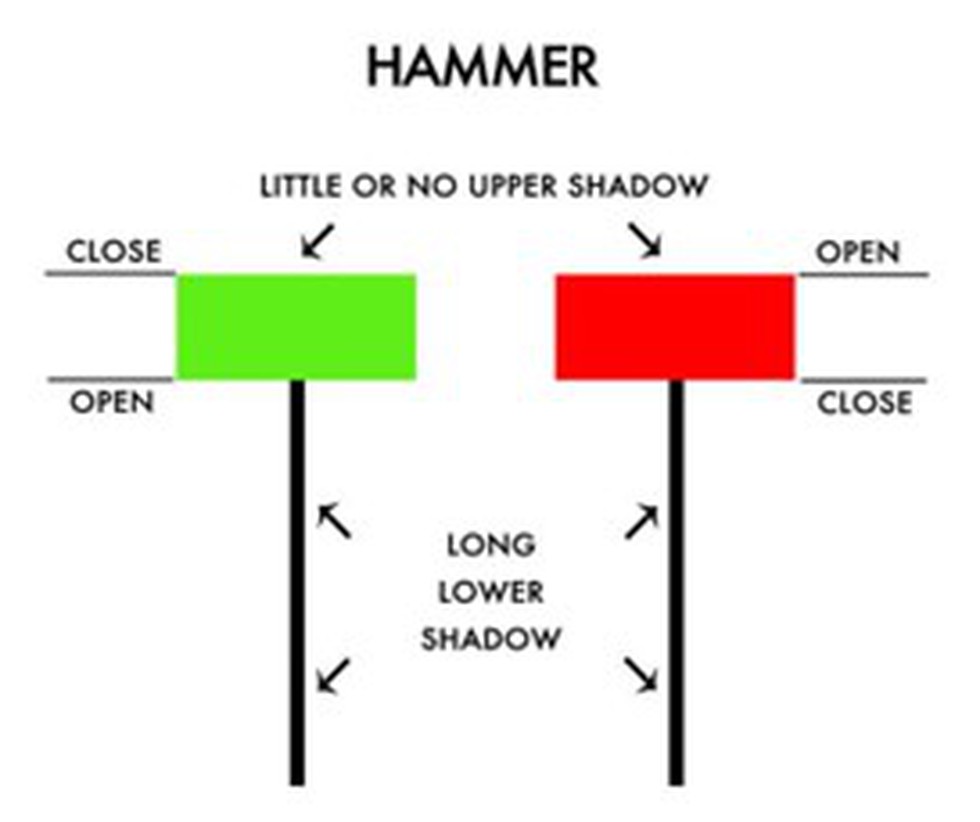
About Hammer Candlesticks in Trading:
- It is one of the most popular candlestick patterns traders use to gauge the probability of outcomes when looking at price movement.
- A hammer is a price pattern in candlestick charting that occurs when a security trades significantly lower than its opening but rallies within the period to close near the opening price.
- This pattern forms a hammer-shaped candlestick, in which the lower shadow is at least twice the size of the real body.
- The body of the candlestick represents the difference between the opening and closing prices, while the shadow shows the high and low prices for the period.
- The hammer candlestick occurs when sellers enter the market during a price decline. By the time the market closes, buyers absorb selling pressure and push the market price near the opening price.
- The close can be above or below the opening price, although the close should be near the open for the real body of the candlestick to remain small.
- Analysts view it as a potential bullish trend reversal indicator, mainly appearing at the end of a downtrend.
- It could be used as a leading intraday indicator to signal a change in bullish/bearish momentum.
Prelims Pointers
Nov. 29, 2023

About Fattah 2:
- Fattah, which means conqueror in Farsi, is a hypersonic ballistic missile.
- It was developed by Iran. It is a new version of its first domestically made hypersonic ballistic missile named ‘Fattah’.
- Features:
- It is equipped with a hypersonic glide vehicle (HGV) warhead that can manoeuvre and glide at hypersonic speed.
- It uses a liquid-fuel rocket propellant.
- The precision-guided two-stage missile can hit targets within a range of 1500 kilometres with a velocity of Mach 15 (fifteen times the speed of sound i.e., 18522 km/hr).
- It can make quick turns to avoid defence systems.
- It is equipped with a warhead that has a spherical engine running on solid fuel and movable nozzles that allow it to change course when outside the atmosphere to accurately help it evade air-defence systems.
What is a Hypersonic Missile?
- A hypersonic missile is a weapon system that flies at least at the speed of Mac 5, i.e., five times the speed of sound and is manoeuvrable.
- These missiles are extremely fast and far harder for surface-to-air missile defence systems to target.
Prelims Pointers
Nov. 29, 2023
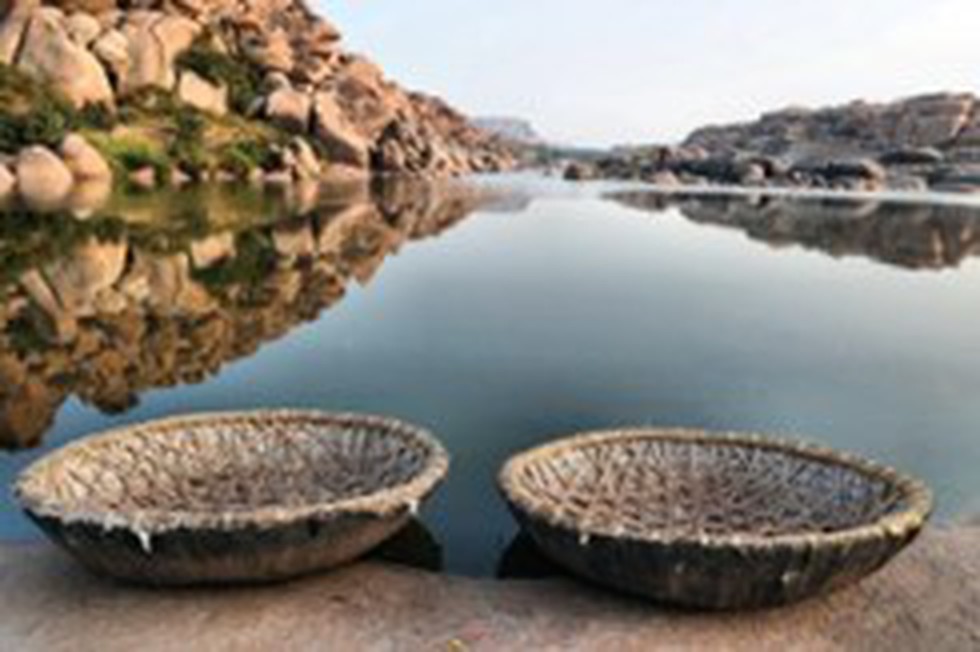
About the Tungabhadra River:
- It is a major river in the south Indian peninsula.
- It is a major tributary of the Krishna River.
- Origin:
- It is formed by the union of two rivers, Tunga and Bhadra, hence the name.
- Both the Tunga and Bhadra Rivers originate on the eastern slopes of the Western Ghats.
- The two rivers merge at Koodli in the Shimoga district of Karnataka, giving birth to the Tungabhadra River.
- Course:
- It flows in a more or less northwest direction before joining the Krishna River at Sangamaleshwaram in Andhra Pradesh.
- The Krishna River finally ends in the Bay of Bengal.
- The river has a total length of 531 km and a catchment area of 28,000 sq. km.
- It flows through the states of Karnataka and Andhra Pradesh.
- It is influenced chiefly by the South-West monsoon.
- Major Tributaries: Varada River and Hagari (Vedathy) River.
- The river has several dams and reservoirs built on it, including the Tunga Anicut Dam, the Bhadra Dam, the Hemavathy Dam, and the Tungabhadra Dam.
- History:
- The Hindus consider this river sacred, and there is a mention of the river in Ramayana, where it is referred to as Pampa.
- In historical times, the Tungabhadra River was known as the Varada River.
- The river was an important source of water for the Vijayanagar Empire.
- The city of Hampi, which was the capital of the Vijayanagar Empire, was located on the banks of the river.
Prelims Pointers
Nov. 29, 2023

About the International Sugar Organisation (ISO):
- ISO is an inter-governmental body completely devoted to improving conditions in the world sugar market.
- Its 87 member states represent 87% of global production, 64% of consumption, 92% of sugar exports, and 34% of sugar imports.
- ISO is based in London.
- The ISO exists to administer the internationally negotiated 1992 International Sugar Agreement (ISA), the objectives of which are:
- to ensure enhanced international cooperation in connection with world sugar matters and related issues.
- to provide a forum for intergovernmental consultations on sugar and on ways to improve the world sugar economy.
- to facilitate trade by collecting and providing information on the world sugar market and other sweeteners.
- to encourage increased demand for sugar, particularly for non-traditional uses.
- To fulfil these objectives, the ISO undertakes many distinct activities, including workshops, seminars, and its long-established and widely-recognized statistical and analytical work.
Prelims Pointers
Nov. 29, 2023
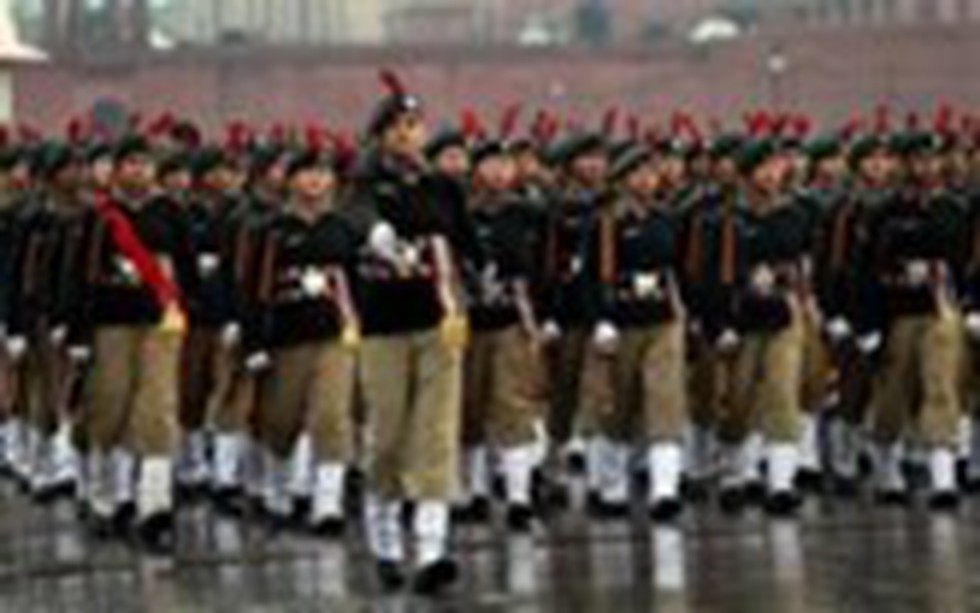
About the National Cadet Corps:
- It is a Tri-Services organisation, comprising the Army, Navy and Air Force, engaged in grooming the youth into disciplined and patriotic citizens.
- It came into existence under the National Cadet Corps Act XXXI of 1948 under the Ministry of Defence (MoD).
- It is a voluntary organisation that recruits cadets from high schools, colleges, and universities all over India.
- The cadets are given basic military training in small arms and parades. They are given preference in military service over normal candidates during selections.
- Aims
- To develop qualities of character, courage, comradeship, discipline, leadership, secular outlook, the spirit of adventure and sportsmanship and ideals of selfless service among the youth to make them useful citizens.
- To create a human resource of organised, trained, and motivated youth to provide leadership in all walks of life, including the Armed Forces, and be always available for the service of the nation.
- To create a suitable environment to motivate the youth to take up a career in the armed forces.
- It is headed by the Director General (DG), an Army officer of the rank of Lieutenant General.
- Headquarters: New Delhi.
Prelims Pointers
Nov. 29, 2023

About INS Imphal:
- It is the third in the Visakhapatnam-class stealth-guided missile destroyers.
- It is among the largest destroyers constructed in India, with an overall length of 164 metres and a displacement of over 7500 tonnes.
- Speed: Over 30 knots (approximately 55 kmph).
- The ship is a potent platform capable of undertaking a variety of tasks and missions, spanning the full spectrum of maritime warfare.
- The ship boasts a high indigenous content of approximately 75%, which includes Medium Range Surface-to-Air missiles, BrahMos surface-to-surface missiles, Indigenous Torpedo Tube Launchers, Anti-Submarine Indigenous Rocket Launchers (Larsen & Toubro, Mumbai) 76mm Super Rapid Gun Mount (BHEL, Haridwar).
- The crest design depicts the Kangla Palace on the left and ‘Kangla-Sa’ on the right.
- The Kangla Palace is an important historical and archaeological site in Manipur and was the traditional seat of the past kingdom.
- With a dragon’s head and lion’s body, the ‘Kangla-Sa’ is a mythical being from Manipur history and is symbolic as the guardian/protector of its people. ‘Kangla-Sa’ is also the state emblem of Manipur.
- It is the first capital warship to be named after a city in the northeast, Imphal, the capital of Manipur.
Prelims Pointers
Nov. 29, 2023

About Comet P12/Pons-Brooks:
- It is a celestial object that has been playfully nicknamed the 'Devil Comet' or likened to the 'Millennium Falcon' for its distinctive appearance.
- This comet, first discovered in the year 1812, completes an orbit around the Sun every 71 years. Its recent activity has been particularly striking, with multiple outbursts of gas and dust that have dramatically increased its brightness.
- The comet's atmosphere, visible as a spherical halo, spans an impressive 3,50,000 kilometres in diameter,
Key Facts about the Himalayan Chandra Telescope
- It is a 2-meter optical-infrared telescope named after Nobel laureate Subramaniam Chandrasekhar.
- It is at the Indian Astronomical Observatory (IAO) in Hanle, near Leh in Ladakh.
- It is currently the tenth-highest optical telescope in the world, situated at an elevation of 4,500 meters.
- The telescope isremotely operated using a dedicated satellite communication link from the Centre for Research & Education in Science & Technology (CREST), Indian Institute of Astrophysics (IIA), Bangalore.
- Imaging instruments include a Faint Object Spectrograph, a near-infrared and an optical CCD camera.
Prelims Pointers
Nov. 29, 2023

About the Global Biodiversity Framework Fund:
- It was created to ramp up investment in nature restoration and renewal.
- It has been designed to mobilise and accelerate investment in the conservation and sustainability of wild species and ecosystems, whose health is under threat from wildfires, flooding, extreme weather, and human activity, including urban sprawl.
- The fund was established at the 7th Assembly of the Global Environment Facility in Vancouver, Canada.
- It will help countries achieve the 23 targets set under the Kunming-Montreal Global Biodiversity Framework (KMGBF).
- The framework was adopted at the 15th Conference of the Parties (COP15) to the UN Convention on Biological Diversity last December.
- It will be managed by the Global Environment Facility (GEF) and raise funds through private, philanthropic, and government investments.
- This is a departure from GEF, which relied on just 40 donors for finance.
- It will also have access to funds earmarked for biodiversity conservation under GEF.
- The facility has a cumulative budget of $5.25 billion for 2022-26, of which 36 percent is earmarked for biodiversity.
- The remaining budget is for projects on climate change, pollution, land and ocean health.
- The GBF Fund Council will be open to representation by the following members,
- 16 Members from developing countries
- 14 Members from developed countries
- 2 members from the countries of central and eastern Europe and the former Soviet Union.
- Decisions of the GBF Fund Council are to be taken by consensus, along the lines of the GEF Instrument.
Prelims Pointers
Nov. 29, 2023

About the Indian Ocean Tuna Commission:
- It is an intergovernmental organisation mandated to sustainably manage highly migratory (tuna and tuna-like) fisheries resources in the Indian Ocean.
- The Agreement for the Establishment of the Indian Ocean Tuna Commission was adopted by the Food and Agriculture Organisation of the United Nations at the 105th Session in Rome on 25 November 1993.
- The objective of the IOTC is to promote cooperation amongst contracting members to ensure, through appropriate management, the sustainable use of fishery resources.
- The Indian Ocean is the second-largest tuna fishery in the world.
- The IOTC currently has 31 contracting parties who are members of the IOTC and two cooperating non-contracting parties, Liberia and Senegal.
- Membership of the IOTC is open to:
- Indian Ocean coastal countries
- countries, or regional economic integration organisations, that are members of the UN
- countries that are members of UN special organisations
- countries that fish for tuna in the Indian Ocean
- India is a member of this organisation.
- Headquarters: Victoria, Seychelles
Nov. 28, 2023
Prelims Pointers
Nov. 28, 2023
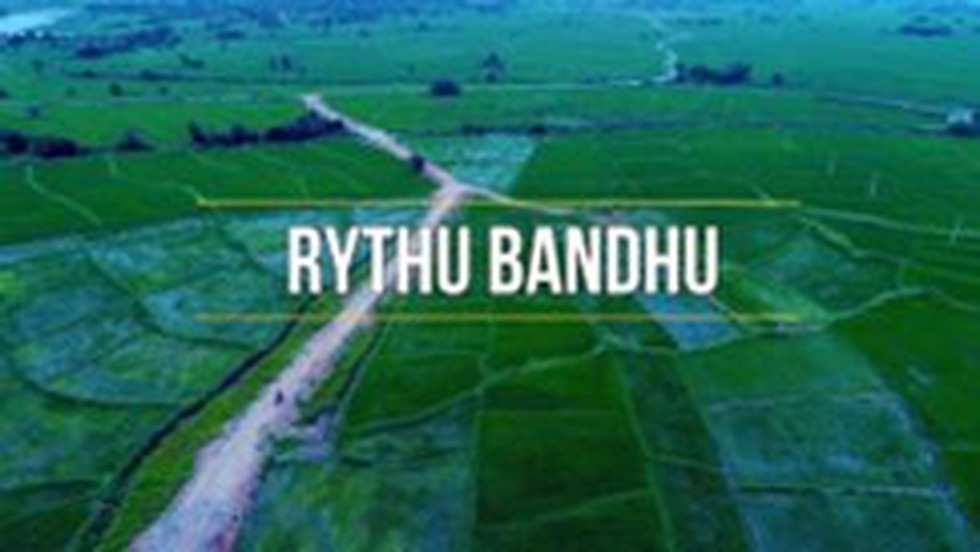
About Rythu Bandhu Scheme:
- The Rythu Bandhu scheme, also known as the Farmer's Investment Support Scheme (FISS), is a welfare programme for farmers started by the Telangana government in 2018.
- The objective of this scheme is twofold:
- to provide a timely cash grant for the initial investment needs of farmers
- to ensure that farmers do not fall into the debt trap.
- Under the scheme, financial assistance of Rs 5,000 per acre per farmer each season is directly transferred to each farmer's account.
- This financial support was distributed biannually, allocated for both the kharif and rabi harvests.
- The assistance can be used for the purchase of inputs like seeds, fertilizers, pesticides, labour, and other investments in the field operations of Farmer’s choice for the crop season.
- Eligibility:
- The scheme is open to all resident farmers in the state who own land.
- Farmers cultivating the land in the forest, a majority of them from Scheduled Tribe communities and having a Record of Forest Rights (ROFR) document, are also eligible to receive benefits under the scheme.
- It is the country's first direct farmer investment support scheme where cash is paid directly to the beneficiary.
Prelims Pointers
Nov. 28, 2023

About Himalayan Black Bear:
- It is a subspecies of the Asian black bear.
- Scientific Name: Ursus thibetanus laniger
- Distribution:
- They live a lot in the Himalayas, in Tibet, India, Nepal, Pakistan, and China.
- In India, they are found throughout the Himalayas, from Jammu & Kashmir to Arunachal Pradesh, and in hilly regions of other northeastern states.
- Habitat:
- The species prefers heavily forested, broadleaved, and coniferous forests as habitat.
- It uses orchards, agricultural fields, and human habitation to move between forest patches.
- Features:
- It has soft and shiny hair, with a white V patch on its chest.
- On average, they range from 1.4 to 1.7 metres in length and weigh from 90 to 200 kg (the higher figure is only likely just prior to hibernation).
- Life span:25 to 30 years in the wild.
- Food: They are omnivorous creatures (like most bears). Their diet consists of acorns, nuts, fruit, honey, roots, and various insects such as termites and beetle larvae.
- Behaviour: Naturally diurnal, but many are largely nocturnal in order to avoid contact with humans.
- Conservation Status:
- IUCN Red List: Vulnerable
Prelims Pointers
Nov. 28, 2023

About AstroSat:
- It is India’s first dedicated multi-wavelength space observatory aimed at studying celestial sources in X-ray, optical, and UV spectral bands simultaneously.
- AstroSat, with a lift-off mass of 1515 kg, was launched by the Indian launch vehicle PSLV from Satish Dhawan Space Centre, Sriharikota, on September 28, 2015, into a 650 km orbit inclined at an angle of 6 degrees to the equator.
- The spacecraft control centre at Mission Operations Complex (MOX) of ISRO Telemetry, Tracking and Command Network (ISTRAC), Bengaluru, manages the satellite during its entire mission life.
- The minimum useful life of the AstroSat mission is around 5 years.
- It carries a total of five scientific payloads, enabling imaging and studying the temporal and spectral properties of galactic and extra-galactic cosmic sources in a wide range of wavelengths on a common platform.
- Scientific Objectives:
- To understand high energy processes in binary star systems containing neutron stars and black holes.
- Estimate magnetic fields of neutron stars.
- Study star birth regions and high energy processes in star systems lying beyond our galaxy.
- Detect new, briefly bright X-ray sources in the sky.
- Perform a limited deep-field survey of the Universe in the Ultraviolet region.
Prelims Pointers
Nov. 28, 2023

About Zojila Pass:
- Zojila Pass, also known as ‘The Mountain Pass of Blizzards’, is a high mountain pass located in the Kargil district of Ladakh.
- It is located on theSrinagar-Kargil-Leh highway (NH-1) at a height of 11,650 feet.
- It lies in the Greater Himalayan Range.
- The pass remains closed for almost half of the yeardue to heavy snowfall.
- History:
- It was the site of the Indo-Pakistan War of 1947-48.
- It was captured by militias aided by the Pakistan Army in 1948, with the ultimate aim of capturing Ladakh.
- However, the pass itself was captured by the Indian Armyon 1st November 1948, in an assault codenamed Operation Bison.
What is Zojila Tunnel?
- Location: It is an under-construction tunnel situated at an altitude of 11,578 ft (around 3,500 metres) on the Srinagar-Leh Highway in Jammu and Kashmir.
- The tunnel would provide all-weather connectivity between Srinagar and Leh on NH-1.
- Total Length: 14.15 km.
- It will be India’s longest road tunneland Asia’s longest bi-directional tunnel.
- It would be 9.5-meter wide and 7.57-meter high in the shape of a horseshoe.
Prelims Pointers
Nov. 28, 2023
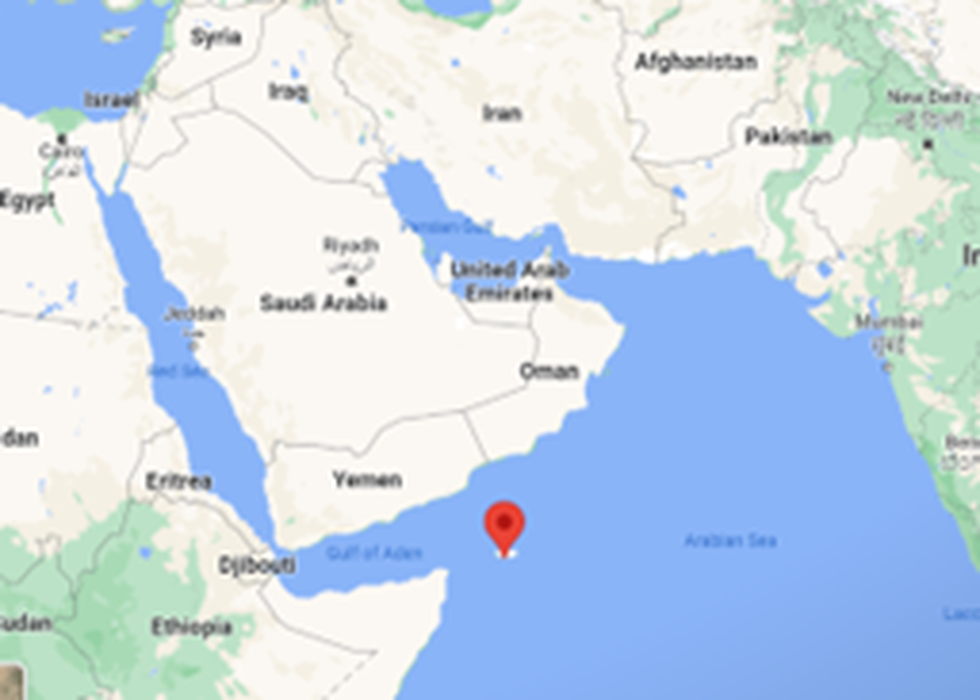
About the Gulf of Aden:
- It is an extension of the Indian Ocean, tucked between the Arabian Peninsula and the African continent.
- The gulf is named after “Aden,” a port city on Yemen’s coast.
- Borders: It is bounded to the south by Somalia and the Socotra Islands (part of Yemen), to the north by Yemen, to the east by the Arabian Sea, and to the west by Djibouti.
- The gulf is connected to the Somali Sea to the south by the Guardafui Channel and to the Red Sea on the west by the Strait of Bab el Mandeb.
- Size: It is approximately 900 km long and 500 km wide and covers roughly 410,000 square kilometers.
- Depth: It has an average depth of 500 meters and a maximum depth of 2,700 meters.
- The dominant relief feature of the gulf’s terrain is the Sheba Ridge, an extension of the Indian Ocean ridge system, which extends along the middle of the gulf.
- It is also a critical part of the Suez Canal shipping route, which connects the Red Sea and the Mediterranean Sea.
- Some of the major cities near the gulf include Aden, Mukalla, Ahnwar, Balhaf, Berbera, Bosaso, and Djibouti City.
Prelims Pointers
Nov. 28, 2023

About Green Leaf Volatiles:
- It represents an important group of plant volatiles.
- They consist of six carbon (C6) compounds, including alcohols, aldehydes, and esters, and are released from almost every plant.
- The release of GLVs is caused by mechanical damage or herbivory by fungal or bacterial infection.
- These are implicated in a panoply of interactions; they have been reported to repel or attract herbivores and their natural enemies.
- Plants have two major defence mechanisms, involving a chain of molecular reactions.
- The reactions are triggered when a plant is damaged and GLVs are released as by-products. (By mounting a defence response, plants can make themselves less palatable or even indigestible to the insect attackers.)
- The molecular cascade is mediated by calcium, a common mediator of chemical and electrical signals found throughout biology.
What are Volatiles?
- These are elements or compounds that change from solid or liquid state into vapour at relatively low temperatures.
- The most common volatiles are carbon dioxide, nitrogen, ammonia, hydrogen, methane, sulphur dioxide, and water, which are abundant in nature and necessary for living organisms.
Prelims Pointers
Nov. 28, 2023

About Sagittarius C (Sgr C):
- It is the star-forming region known to be situated approximately 300 light-years from the Milky Way's central supermassive black hole, Sagittarius A*.
- It is revealing a bustling cluster of protostars within an infrared-dark cloud.
- These nascent stars are in the process of accumulating mass, their outflows glowing intensely in the infrared spectrum, akin to embers in a cosmic bonfire.
- The cloud that protostars are emerging from is so dense that the light from stars behind it cannot reach Webb.
- Scattered throughout are smaller infrared-dark clouds, akin to celestial voids against the starry backdrop, signalling the birthplaces of future stars.
- Webb's Near-Infrared Camera (NIRCam) has detected extensive emissions from ionised hydrogen on the periphery of the dark cloud, highlighted in a striking cyan hue.
Key facts about the James Webb Space Telescope
- It was built in collaboration between NASA, the European Space Agency(ESA) and the Canadian Space Agency.
- It was launched in December 2021.
- It is presently at a point in space known as the Sun-Earth L2 Lagrange point.
- Lagrange Point 2 is one of the five points in the orbital plane of the Earth-Sun system.
- It's the largest, most powerful infrared space telescope ever built.
- Objectives: It will examine every phase of cosmic history, from the Big Bang to the formation of galaxies, stars, and planets to the evolution of our Solar System.
Prelims Pointers
Nov. 28, 2023
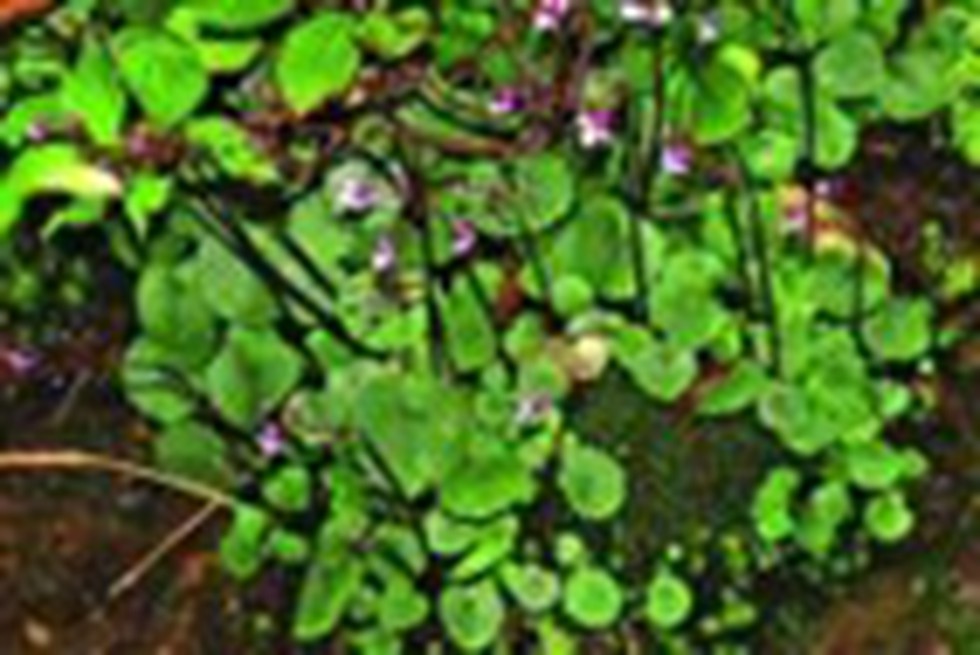
About New plant species:
- The species is named ‘Impatiens Karuppusamyi’ after S. Karuppusamy for his contributions to the taxonomy of South Indian angiosperms.
- The plant is found only in the Agasthyamalai region in the southern Western Ghats.
The plant, which belongs to the scapigerous group (stemless group), is seen only during the monsoon season for a few weeks. - Impatiens is a genus of more than 1,000 species of flowering plants widely distributed throughout tropical Africa, Madagascar, India, Sri Lanka, and China.
Key facts about Kalakkad Mundanthurai Tiger Reserve
- It is located in the Southern Western Ghats, in the Tirunelveli and Kanyakumari districts of Tamil Nadu.
- This reserve is a mixture of three main sanctuaries: Kalakkad Sanctuary, Mundanthurai Sanctuary, and a part of Kanyakumari Sanctuary.
- Nestled between Kerala and Tamil Nadu, the Agastya Malai Hill Range forms the core area of the sanctuary and is part of one of the world's 18 biodiversity hotspots.
- It is also known as the “River Sanctuary,"with as many as 14 rivers originating from this Tiger Reserve.
- Flora: This region has vegetation types which gradually change from dry thorn forest to dry deciduous, moist deciduous and a patch of West Coast wet evergreen forests on the higher reaches of the reserve.
- Fauna: Lion-tailed Macaque, Nilgiri Tahr, Nilgiri Pipit, Grey Headed Bulbul, Blue Winged Parakeet etc.
Prelims Pointers
Nov. 28, 2023

About Mycoplasma Pneumonia:
- It’s a type of bacteria that acts more like a virus and spreads faster from person to person.
- It infiltrates both sides of the lungs, increasing cough and breathing difficulties. It damages the lining of the respiratory system (throat, lungs, windpipe).
- Symptoms
- It is not as rapidly infectious as a virus but it can affect our throat and our nasal cavities and descend to the lungs very quickly, causing pneumonia.
- Signs include the breakup of red blood cells, a skin rash and joint pain.
- Children may report a stuffy or runny nose, sore throat, watery eyes, wheezing, vomiting, and diarrhoea.
- Who is at risk?
- The bacteria can cause pneumonia in any age group, especially in children, elderly or those with weakened lungs.
- Vulnerable groups, who already have respiratory issues, are prone to developing this infection in a severe form.
- Treatment: There are multiple antibiotics that effectively cure this infection.
Prelims Pointers
Nov. 28, 2023

About Fibre Optic Cable:
- Optical fibres are made of thin, cylindrical strands of glass.
- The diameter of a typical fibre is close to the diameter of human hair.
- These fibres can carry information, such as text, images, voices, videos, telephone calls, and anything that can be encoded as digital information, across large distances almost at the speed of light.
- They are strong, light, and flexible, and ideal to be buried underground, drawn underwater, or bent around a spool.
How do optical fibres work?
- These cables work basically on the principle of total internal reflection.
- The signals encoded as electromagnetic waves can be fed into one end of an optical fibre, and they will reflect and bounce many times between the glass walls as they traverse several kilometres bearing the information in the signals.
- A fibre optic communication system consists of three parts.
- A transmitter encodes information into optical signals (in the form of rapidly blinking light pulses of zeros and ones).
- An optical fibre carries the signal to its destination. There, a receiver reproduces the information from the encoded signal.
- Optical waves allow a high data transmission rate of up to several terabits per second in a single fibre.
- Unlike radio or copper-cable communication, fibre cables are also insensitive to external perturbations such as lightning and bad weather.
How are these fibres developed?
- Nowadays, glass fibres are manufactured using the fibre-drawing technique.
- First, a thick glass rod, called a preform, of high purity and an engineered refractive index profile is prepared using chemical vapour decomposition.
- The preform is heated to about 1,600 degrees C until it melts and is then drawn into a thin, long fibre.
- The drawing process reduces the fibre’s diameter while maintaining its length. The drawn fibre is coated with a protective layer to enhance strength and durability.
Applications
- Fibre optics technology has since been widely used in telecommunication, medical science, laser technology, and sensing.
- Optical fibres are an essential part of this development in communication.
Nov. 27, 2023
Prelims Pointers
Nov. 27, 2023
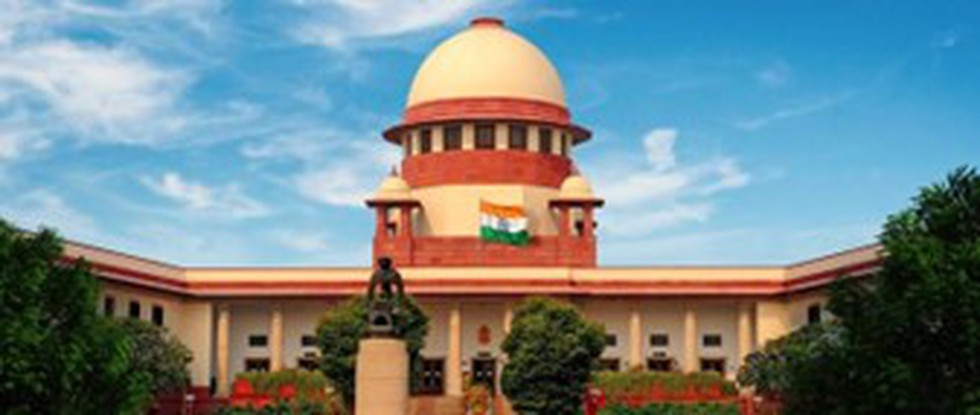
About the e-SCR portal:
- It was an initiative by the Supreme Court (SC) of India to provide the digital version of the apex court's judgements in the same manner they are reported in the official law report.
- It provides free access to about 34,000 judgements of the SC to lawyers, law students, and the common public.
- These verdicts will be available on the apex court website, its mobile app, and on the judgement portal of the National Judicial Data Grid (NJDG).
- It is a free service available for lawyers across the country.
- The Supreme Court has developed a search engine with the help of the National Informatics Centre comprising elastic search techniques in the database of e-SCR.
- The search facility in e-SCR provides for free text search, search within search, case type and case year search, judge search, year and volume search, and bench strength search options.
National Judicial Data Grid (NJDG) portal:
- The NJDG portal is a national repository of data relating to cases instituted, pending, and disposed of by the courts across the length and breadth of the country.
- In this portal, one may access case-related information and statistics such as institution, pendency, disposal of cases, case types, and the year-wise break-up of the Supreme Court of India.
- It is a database of orders, judgements, and case details of 18,735 District & Subordinate Courts and High Courts created as an online platform under the e-Courts Project.
- It has been developed by the National Informatics Centre (NIC) in close coordination with the in-house software development team of the Computer Cell, Registry with an interactive interface and analytics dashboard.
- The entire database will be periodically updatedon the NJDG portal.
- NJDG works as a monitoring tool to identify, manage, & reduce the pendency of cases.
- It helps to provide timely inputs for making policy decisions to reduce delays in disposing of cases and reduce case pendency.
Prelims Pointers
Nov. 27, 2023
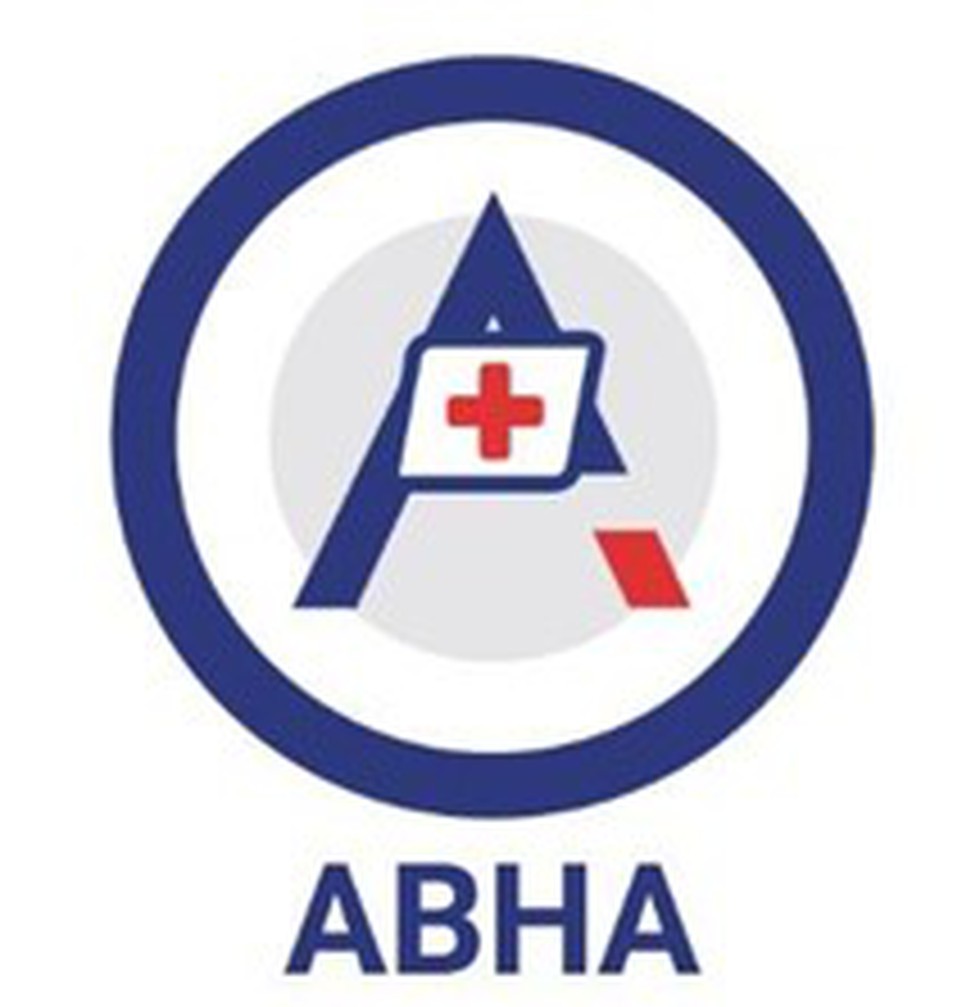
About the Ayushman Bharat Health Account (ABHA):
- ABHA is a randomly generated 14-digit number used for the purposes of uniquely identifying persons, authenticating them, and threading their health records (only with their informed consent) across multiple systems and stakeholders.
- People can opt-in to create a digitally secure ABHA, which allows them to access and share their health data with participating healthcare providers and payers.
- It helps citizens maintain their health records at one place.
- It allows users, insurance companies, and hospitals to access health records digitally.
- It will enable easy digital access to lab reports, prescriptions, consultation details, and diagnoses from verified doctors by presenting the Health ID.
- In addition, it will digitally connect the hospitals across the country with each other.
- Having an ABHA health ID card is not mandatory. People can choose to register for the facility or erase their information from the ABHA database if they want to opt out of this facility.
Prelims Pointers
Nov. 27, 2023
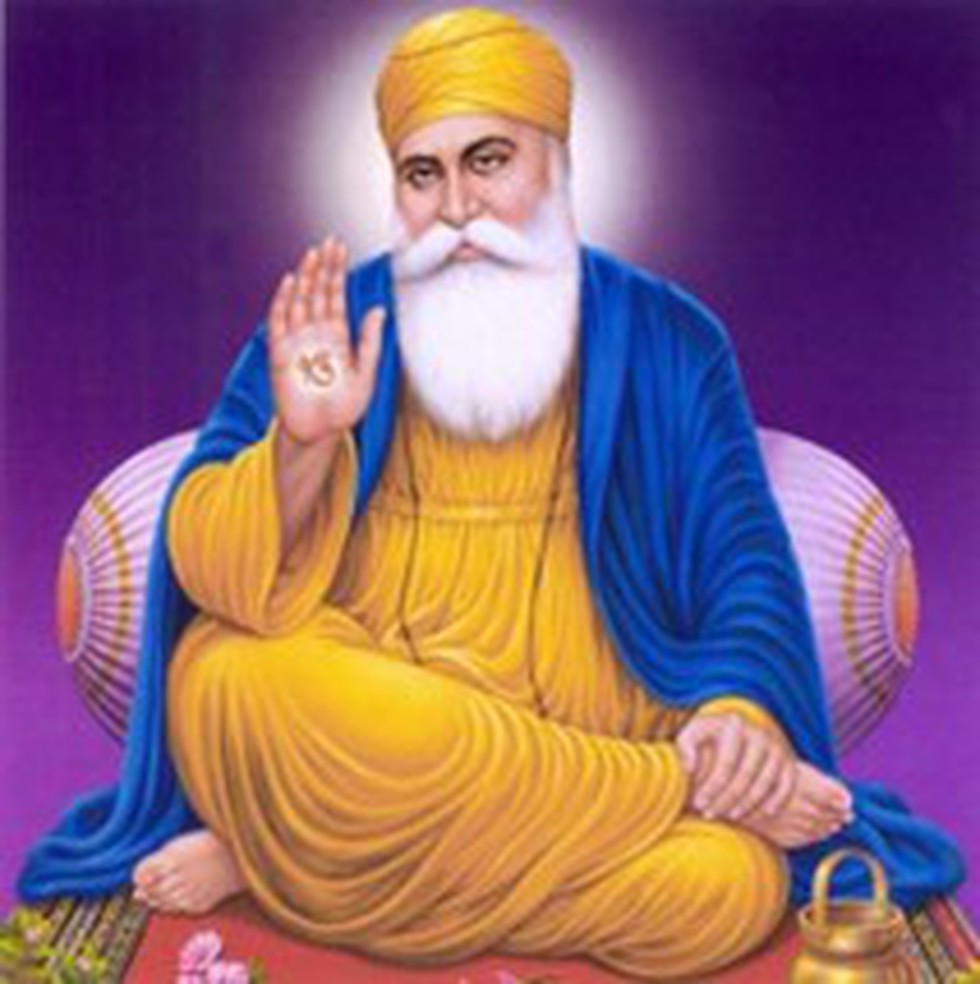
Guru Nanak Jayanti
- It is celebrated on the 15th lunar day of the Hindu month of Kartik.
- It is one of the most important days of Sikhism and marks the birth anniversary of the first of the ten Sikh gurus and the founder of Sikhism, Guru Nanak Dev Ji.
- The day honours the teachings and wisdom of Guru Nanak Dev Ji and also promotes unity, equality, and selfless service, embodying the core principles of Sikh philosophy.
About Guru Nanak:
- Guru Nanak (1469–1539), also referred to as Baba Nanak, was the founder of Sikhism and the first of the ten Sikh Gurus.
- He was born on April 15, 1469, in Rai Bhoi di Talwandi, now Nankana Sahib, Pakistan.
- Guru Nanak Dev spread the message of ‘Ek Omkar’ which means that God is one and is present everywhere.
- He propagated the idea that any person could connect with God by worshipping him with a clean conscience.
- Guru Nanak laid the foundation for the three pillars of Sikhism: Naam Japna (meditating on God's name), Kirat Karni (honest and truthful living), and Vand Chakna (sharing with others, especially those in need).
- He was a poet, a mystic, a philosopher, and a singer who denounced ritualism as well as discrimination against women and those of lower socioeconomic status.
- Guru Nanak rejected the caste system and promoted the idea of equality among all people, regardless of their background, caste, or gender.
- He introduced the concept of "Sangat" (community), where all could come together to worship.
- All his teachings are composed together to form the sacred book called Guru Granth Sahib, the central holy religious scripture of Sikhism.
Prelims Pointers
Nov. 27, 2023
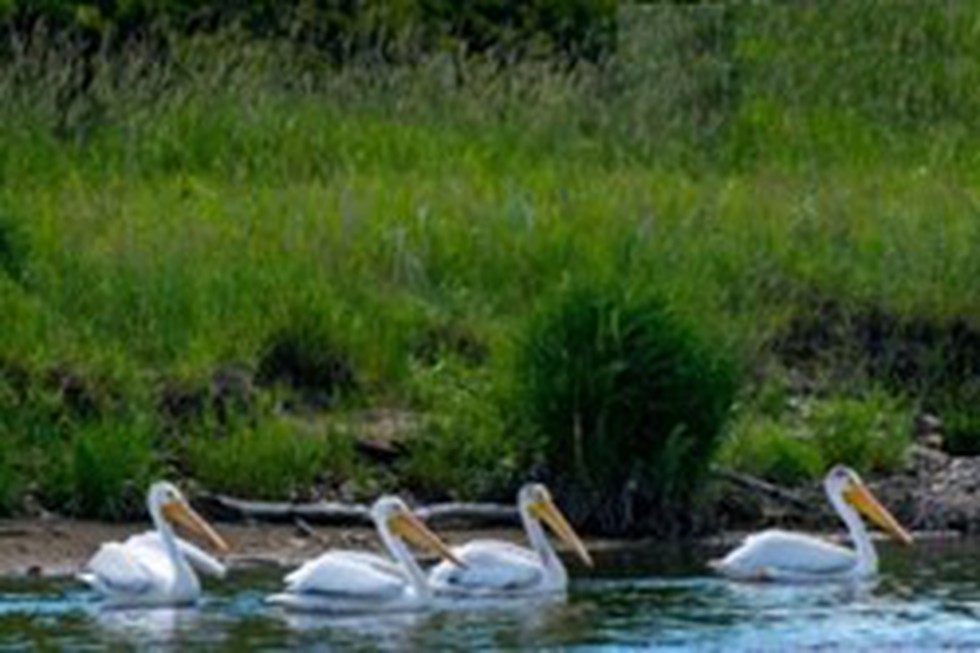
About Shettihalli Wildlife Sanctuary:
- Location: It is located in the Shimoga District of Karnataka.
- It spans an area of 395.6 square kilometres.
- It was declared a wildlife sanctuary on 23rd November 1974.
- Mandagadde Natural Bird Sanctuary, present on a small island in the river Tunga is also a part of this Sanctuary.
- The Tunga Anicut Dam is situated within the sanctuary and provides shelter for otters and water birds.
- Vegetation:
- It is mainly covered by tropical evergreen and semi-evergreen forests.
- The eastern and central parts are mostly covered by dry and moist deciduous forests, while the western parts have semi-evergreen forests.
- Flora: Major tree species include silver oak, teak, Indian Thorny Bamboo, Calcutta bamboo, Asan, Tectona Grandis, Sweet Indrajao, Amla, etc.
- Fauna:
- It houses mammals like Tiger, Leopard, Wild Dog, Jackal, Gaur, Elephant, Sloth Bear Sambar, Spotted Deer, Wild Pig, Common Langur, Bonnet Macaque, etc.
- Birds include Hornbills, Kingfishers, Bulbuls, Parakeets, Doves, Pigeons, Babblers, Flycatchers, Munias, Swallows, Woodpeckers, Peafowl, Jungle fowl and Partridges.
Prelims Pointers
Nov. 27, 2023

About Supplementary Grants:
- Article 115of the Indian Constitution provides for supplementary, additional, or excess grants.
- When grants, authorised by the Parliament, fall short of the required expenditure, an estimate is presented before the Parliament for Supplementary or Additional grants.
- These grants are presented and passed by the Parliament before the end of the financial year.
- When actual expenditure incurred exceeds the approved grants of the Parliament, the Ministry of Finance and Ministry of Railways present a Demand for Excess Grant.
- The Comptroller and Auditor General of India bring such excesses to the notice of the Parliament.
- The Public Accounts Committee examines these excesses and gives recommendations to the Parliament.
- The Demand for Excess Grants is made after the actual expenditure is incurred and is presented to Parliament after the end of the financial year in which the expenses were made.
Prelims Pointers
Nov. 27, 2023

About the Booker Prize:
- It is the world’s leading literary award for a single work of fiction.
- Founded in the UK in 1969, the Booker Prize initially rewarded Commonwealth writers and now spans the globe: it is open to anyone regardless of origin.
- It aims to promote the finest in fiction by rewarding the best novel of the year written in English.
- Eligibility:
- The Booker Prize awards any novel originally written in English and published in the UK and Ireland in the year of the prize, regardless of the nationality of the author.
- The novel must be an original work in English (not a translation).
- It must be published by a registered UK or Irish imprint; self-published novels are not eligible.
- The winner receives £50,000, and each of the shortlisted authors will be given £2,500.
- The Booker Prize Foundation: It is a registered charity established in 2002. Since then, it has been responsible for the award of the Man Booker Prize for Fiction and for the Man Booker International Prize since its inauguration in 2005.
Prelims Pointers
Nov. 27, 2023
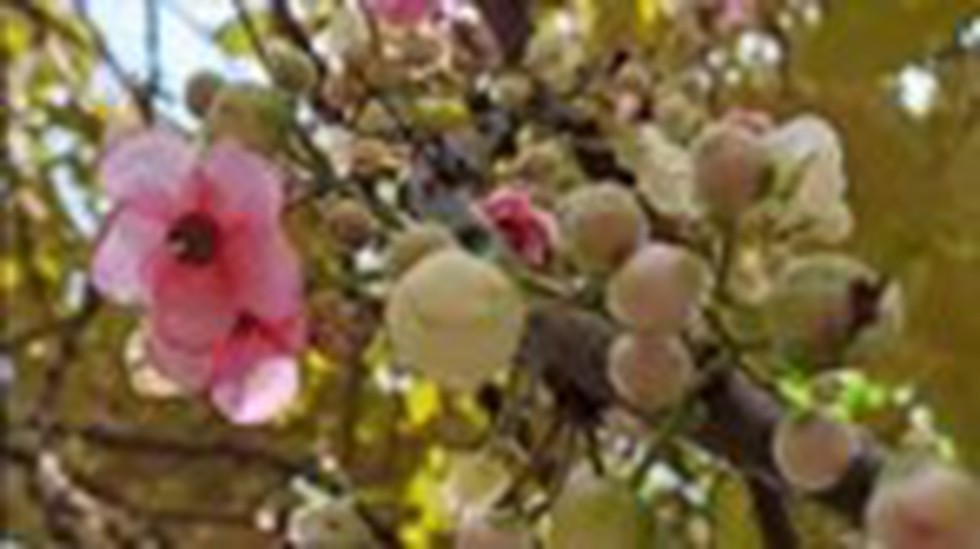
About Saurauia Punduana:
- It is a plant species that belongs to the Actinidiaceae family.
- The flowers of Saurauia Punduana turn white to pink on maturity. Petals are pink, ovate to obovate, curled at the tip.
- Its fruits are spherical, shining white, and are used in veterinary medicine.
- Habitat: In subtropical forests, altitude 600-1800 m.
- Its flowers are complete, bisexual, i.e., with functional male (androecium) and female (gynoecium),
- It is a critically endangered species as per the International Union for Conservation of Nature (IUCN) Red List.
- Global Distribution: Bangladesh, Bhutan, China, India, and Myanmar.
- In India, it is found in Arunachal Pradesh, Assam, Manipur, Meghalaya, Mizoram, Nagaland, and Tripura.
- Threats: Saurauia species are susceptible to various insect pests, virus and fungi, affecting leaves, fruits and roots.
Prelims Pointers
Nov. 27, 2023

About Amyloidosis:
- It is a rare disease that occurs when an abnormal protein, called amyloid, builds up in one’s organs, affecting their shape and functioning.
- Amyloid deposits can build up in the heart, brain, kidneys, spleen, and other parts of the body, leading to life-threatening conditions like organ failure.
- Some varieties of amyloidosis occur in association with other diseases.
- These types may improve with treatment of the underlying disease. Some varieties of amyloidosis may lead to life-threatening organ failure.
- The general signs or symptoms would include: Severe fatigue; Loss of weight; swelling in the belly, legs, ankles or feet; Numbness, pain, or tingling in hands or feet, and changes in skin colour.
- Different amyloidosis that are prevalent
- Light-chain (AL) amyloidosis: People with conditions such as multiple myeloma or a bone marrow illness are more likely to have AL amyloidosis.
- AA amyloidosis: Previously known as secondary amyloidosis, this condition is the result of another chronic infectious or inflammatory disease, such as rheumatoid arthritis, Crohn’s disease, or ulcerative colitis.
What is Lysozyme?
- It is a protein present in mucosal secretions and a principal component of airway fluid.
Key points about the research
- They have assembled lysozyme molecules as a 2D monolayer at the interface of pure aqueous subphase.
- Researchers used the 2D protein monolayer to understand the behaviour of lysozyme molecules at air-water as well as at air-solid interface with the help of a technique called the Langmuir-Blodgett (LB) technique.
- The physical properties of lysozyme molecules at the air-water interface were investigated under the variation of surface pressure and subphase pH conditions in the study.
- The compressible behaviour of lysozyme monolayers was correlated to the stripe-like domains formed with an increase in surface pressure.
- Lysozyme molecules at the air-water interface and their structural or conformational changes in variable pH conditions can be considered a model system to study Amyloidosis disease, which occurs because of the misfolding and agglomeration of lysozyme molecules.
Prelims Pointers
Nov. 27, 2023

About Emmy Awards:
- The Emmy Awards are the most renowned accolades given to television and emerging media performances. Unlike Oscars and Golden Globe Awards, they aren’t given for films.
- These were conceived in 1948, and the first ceremony took place on January 25, 1949.
- A total of six awards were presented, such as the Most Outstanding Television Personality and Most Popular Television Program.
- Apart from the International Emmy Awards and the Primetime Emmy Awards, the Emmys are also given in the following categories: daytime, sports, news and documentary, technology and engineering, and regional.
- While Primetime Emmy Awards honour television shows produced only in America and aired during primetime, International Emmy Awards are for international shows.
- Daytime Emmy Awards are given to American shows aired during late-morning and afternoon. Regional Emmy Awards are for regional television markets, including state-to-state programming, local news, and locally produced shows.
- These awards are given by three sister organizations:
- First is the Television Academy, which administers the Primetime Emmy Awards.
- Second is the National Academy of Television Arts & Sciences, which oversees daytime, sports, news and documentary categories.
- Third is the International Academy of Television Arts & Sciences, which is responsible for International Emmys.
- Each organisation maintains its own membership of television professionals who vote and decide who will get the award.
Prelims Pointers
Nov. 27, 2023
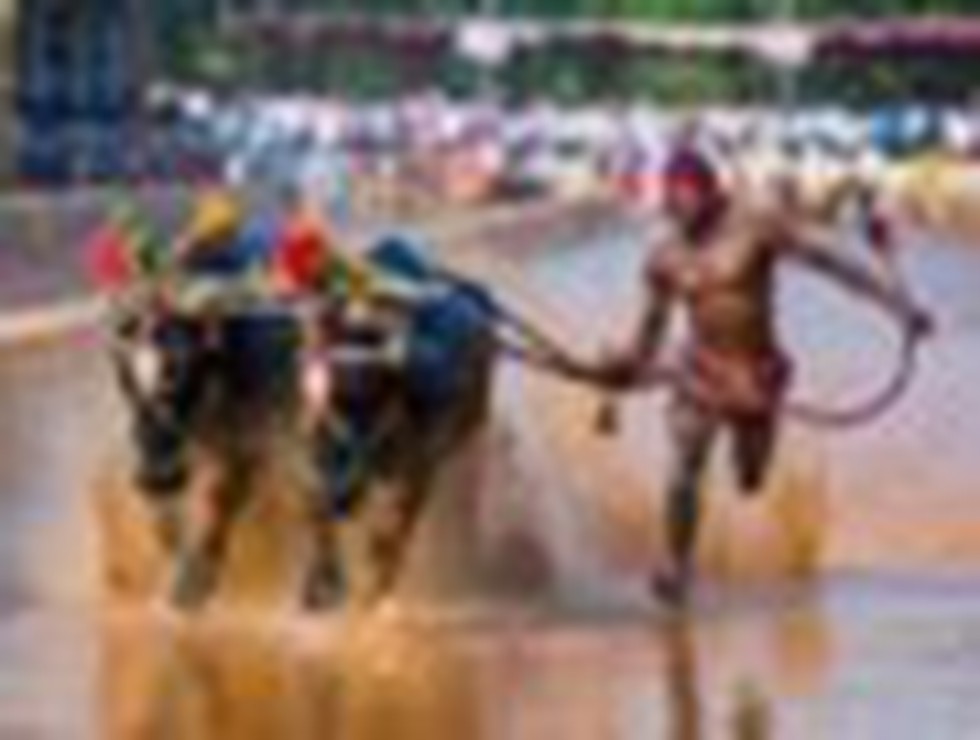
About Kambala:
- It is a folk sport practised in coastal Karnataka districts, especially in regions where Tulu speakers form a majority.
- Earlier, races would be organised by various families and groups in the slushy paddy fields in the days after the harvest.
- It is a prestige event for many families, especially from the Bunt community in the coastal regions.
- Pairs of buffaloes are groomed by them around the year in hopes of winning a major Kambala event or other races.
- Different categories of Kambala: Kambala is generally held under four categories.
- Negilu (plough): where lighter ploughs are used to tie buffaloes for the race. The event is for entry-level buffalo pairs, participating in their first Kambala race.
- Hagga (rope): Where buffaloes are raced by jockeys with just a rope tied to both buffaloes.
- Adda Halage: In which participants stand over a horizontal plank which is dragged by buffaloes. Unlike Hagga and Negilu, where jockeys run behind the animals, buffaloes drag the jockeys in Adda Halage.
- Kane Halage: In this, a wooden plank is tied to buffaloes. The plank, on which jockeys stand, has two holes through which water gushes out as the plank is dragged along the slush tracks. The height to which water splashes determines the winner of the event.

